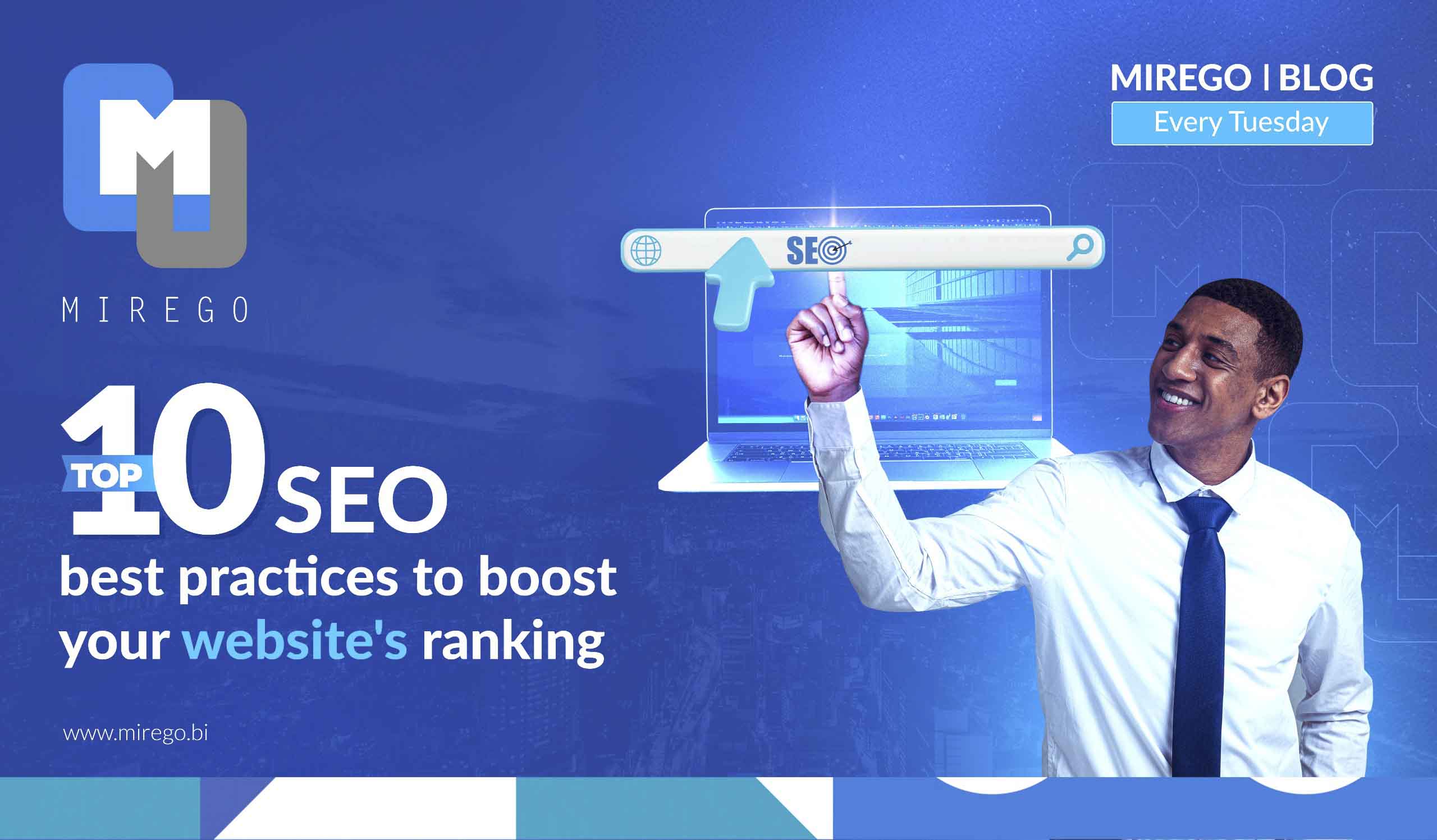


Introduction
SEO best practices are tried-and-tested tactics for improving a website or brand’s visibility in search engine results pages, without paying for ads. These practices include on-site optimization, keyword research, and backlink building. Following these best practices can help you improve brand awareness and get more organic traffic (unpaid clicks) from search engines like Google.
There are a million things you can do to get higher Google rankings (including advanced SEO strategies and techniques). But it’s important to get the basics of SEO first. In other words, you want to make sure that your site follows current SEO best practices. That’s the foundation. Then, once you get your foundation in place, dive into new and advanced approaches.
With that, here are the 10 most important SEO best practices you need to know in 2024:
1. Add Your Main Keyword Early On in Your Content
It’s well-known that including your main keyword multiple times on your page is essential. However, the placement of this keyword also matters. Ensure you mention your primary keyword at least once at the top of your page. Google gives more weight to terms that appear early in your content, helping your page rank higher.
Why Keyword Placement Matters:
Google’s algorithms are designed to prioritize content that appears to be most relevant to a user’s query. When a keyword appears early in your content, it signals to Google that your page is particularly relevant to that keyword. This can be beneficial in improving your page’s visibility in search engine results pages (SERPs).
How to Implement This Practice
• Introduction: Mention your main keyword in the first 100-150 words of your content. This can be in your opening sentence or within the first paragraph. The idea is to integrate it naturally so it reads well and provides value to the reader.
• Headings and Subheadings: Use your main keyword in one or more headings or subheadings. This not only helps with SEO but also enhances the readability and structure of your content.
• Title Tag and Meta Description: Ensure your keyword appears in your title tag and meta description, as these are prime real estate for SEO.
Example: If your main keyword is “digital marketing strategies,” you might start your content like this: “Digital marketing strategies are essential for any business looking to thrive in today’s competitive market. By implementing effective digital marketing strategies, you can increase your brand’s visibility and drive more traffic to your website.”
2. Write Unique Titles, Descriptions, and Content
Avoiding duplicate content is crucial for SEO success. Google penalizes sites that have duplicate or near-duplicate content across their pages. This means every piece of content on your site needs to be unique. This includes:
• Title Tags: Each page on your website should have a unique title tag that accurately reflects the content of the page. This helps both users and search engines understand what the page is about.
• Meta Descriptions: Like title tags, meta descriptions should be unique and provide a concise summary of the page’s content. This snippet appears in search results and can significantly impact click-through rates.
• Content: The main body of your web pages should be original and provide value to your audience. Avoid copying text from other pages on your site or from external sources.
• Image Alt Text: Alt text should describe the content and function of the images on your page. Unique alt text helps search engines understand the context of images and improves accessibility for users with disabilities.
• Product Pages: For eCommerce sites, each product page should have a distinct description, even if products are similar. This can be challenging, but it’s essential to differentiate your content.
• Landing Pages: Ensure each landing page has unique content tailored to its specific audience and purpose.
• Category Pages: Even category pages need unique descriptions that help users and search engines understand what types of products or content are available.
3. Optimize Your Title Tag for SEO
Your title tag plays a significant role in on-page SEO. Google emphasizes the importance of high-quality titles on web pages. Here are some tips for optimizing your title tag:
• Front-load Your Main Keyword: Place your target keyword at the beginning of your title tag, as search engines prioritize early terms.
• Use One Keyword Per Title: Avoid keyword stuffing. Focus on a single main keyword to naturally rank for related terms.
4. Improve Your Site’s User Experience (UX)
Enhancing your site’s UX can directly and indirectly boost your SEO. Google can detect when users quickly leave your site (known as “pogo-sticking”), indicating they didn’t find what they were looking for. High bounce rates can negatively impact your rankings. Ensure your site is user-friendly, free from intrusive pop-ups, and devoid of broken links to encourage longer visits and more shares.
How to Enhance UX:
• Clear Navigation: Make it easy for users to find what they’re looking for with intuitive menus and internal links.
• Fast Loading Speed: Optimize images and use a Content Delivery Network (CDN) to reduce load times.
• Mobile-Friendly Design: Ensure your site works well on all devices.
• Engaging Content: Use multimedia and interactive elements to keep users engaged.
5. Optimize Your Site’s Loading Speed
Site loading speed is a confirmed ranking factor. A faster-loading site improves user experience and boosts your rankings, especially on mobile devices. Use tools like Google’s PageSpeed Insights to benchmark and improve your site’s speed. Consider compressing images, using lightweight themes, enabling lazy loading, and employing a Content Delivery Network (CDN) to enhance performance.
6. Track Your Results with Google Search Console
Google Search Console is an invaluable tool for monitoring your site’s performance in search results. It provides insights into the keywords driving traffic to your site, your page’s click-through rates, and indexing issues. Regularly check the Performance, Coverage, and Enhancements reports to track your SEO progress and address any problems promptly.
7. Optimize Images for SEO
Image SEO is not just about ranking in Google Images. Well-optimized images can help your pages rank higher in web search. Use descriptive filenames for your images and write detailed alt text to help search engines understand your images’ content.
Internal linking helps distribute link authority throughout your site, improving the rankings of linked pages. Use keyword-rich anchor text for your internal links and link from older, high-authority pages to newer ones. This practice helps search engines understand the relevance and hierarchy of your content.
9. Publish Amazing Content
High-quality content is essential for SEO. Today’s definition of quality content includes originality, helpfulness, and depth. Invest time, money, and effort into creating content that stands out. Longer, more detailed posts tend to perform better in search results and attract more backlinks.
10. Build Backlinks to Your Website
Backlinks remain a critical ranking factor in 2024. Focus on creating content formats that naturally attract links, such as “what” and “why” posts and infographics. Additionally, incorporate a “hook” in your content, a unique angle, data point, or controversial statement that encourages others to link to you.
Conclusion
Mastering SEO in 2024 requires understanding and implementing foundational best practices. By optimizing your title tags, enhancing your site's user experience, and focusing on high-quality content, you can significantly improve your website's visibility in search engine results. SEO is an ongoing process, so staying updated with the latest trends and continuously refining your strategies is crucial.
At MIREGO, the leading marketing agency in Burundi, we provide valuable educational content to help you succeed in digital marketing. Follow us on Facebook, Instagram, LinkedIn, WhatsApp channel and Twitter for the latest insights and to learn more about how we can help your business thrive. Join our community and let’s achieve remarkable results together!

As the marketplace is frequently evolving, it's critical to track the results of your mark ...

Introduction:
In today's competitive marketplace, building a prominent brand requires more than just a great product or service. It demands a strategic approach that encompasses a well ...

Introduction
In today's fiercely competitive marketplace, brand maintenance is a critical aspect of achieving enduring success. A brand that exudes strength not only sets your business ...